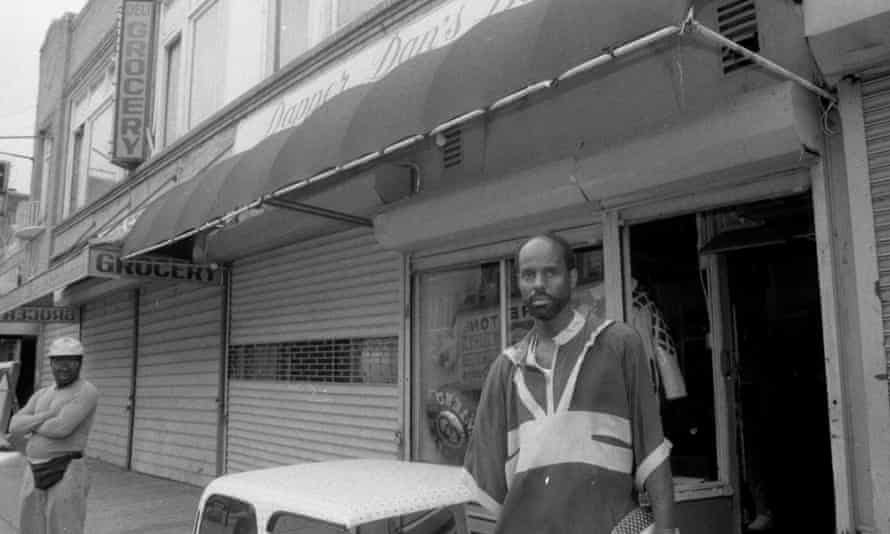Dapper Dan: Harlem's Best-Kept Secret To International Fashion Icon
Dapper Dan is known as one of the most influential fashion designers now, but it took decades for him to get the recognition he deserved. Here are some of the lessons I learned from reading his memoir
Happy New Week,
I’ve been really enjoying writing these case studies so I want to write another about an extremely impressive entrepreneur and fashion mogul Dapper Dan. In his memoir Made In Harlem, Dapper Dan shares his rags to riches story.
Dapper Dan made a name for himself as one of Harlem’s premier fashion designers in the 1980s, creating unique leather goods covered in high fashion counterfeit logos. Dapper Dan, started off as a professional gambler from a very young age, he says “First thing that I learned in life was about the gospel, the second was gambling.”
Dapper Dan was also a good writer, his writing led to him touring Kenya, Uganda, Ethiopia, Egypt, and Tanzania in 1968, as part of a programme sponsored by Columbia University. Six years later he returned to Africa and traveled to Congo, Lagos, and Monrovia in Liberia where he befriended a tailor who made him a suit from vivid local fabrics. This was where he conceived his trademark idea, which he simply put as the “Africanization of the premium European brand.”
Dapper Dan decided he didn't want to be part of the gambling world anymore and decided to follow his fashion dream. He began selling clothing out of his car and later opened his first boutique in 1982. Initially, his plan was to become a wholesaler, but he consistently encountered problems trying to find businesses that would take him seriously. He found an unconventional solution to his annoying problem and decided to take it upon himself to learn everything he could about fashion, from business development to design.
Dapper Dan started to learn how to print textiles, he used bootleg fabrics to make high fashion prints, ripping off the symbology and iconography of massive popular brands such as Fendi, Louis Vuitton, Gucci, MCM, etc. He made outfits for well-known individuals such as LL Cool J, Big Daddy Kane, Rakim, Bobby Brown, Salt N Pepa, Mike Tyson. Dapper Dan made luxury even more luxurious, producing custom looks in fur and designer leather for those who could afford his clothing.
By the late 80s, the boutique was being regularly raided by the police. In 1992, after a successful trademark infringement case from Fendi, Dapper Dan’s boutique was shut for good. In 2017 came a turnaround in Dapper Dan’s fortunes. When Gucci put a puff-sleeved mink bomber jacket emblazoned with the double G monogram down the catwalk, the piece’s similarity to a Dapper Dan jacket made for the Olympian track star Diane Dixon in 1989 was picked up by social media users, and they called Gucci out for cultural appropriation.
In response, Gucci hired Dapper Dan to design a capsule collection, and in 2018 it sponsored a new appointment-only atelier in Harlem in tribute to his original boutique. Dapper Dan’s journey was not easy, there are a lot of lessons to be learned, but here are three key lessons I learnt.
1. You can’t avoid the hard work
Dapper Dan had a remarkable work ethic, he kept his store open 24 hours a day to cater to the schedules of his clientele. This meant Dapper Dan was sleeping in his store, although I don't recommend this, he did whatever he could to succeed and keep his customers happy.
2. Know your target audience and give them the best customer experience
Dapper Dan served mostly high-end clientele, he served rappers, athletes, and drug kingpins. He treated them with the best customer service, Dapper Dan says “Fashion designers create from their mind, like poets and writers, but I feel more like a doctor – I have to make the patient feel good.” Dapper Dan was also very strategic, to combat haggling, he hired attractive girls making customers want to flex and stroke their egos. To offer the best customer experience, focus on the outcomes customers will get, not the service you’re offering.
3. To stay relevant you must keep innovating
The key to staying relevant is to always come out with something different and new. Dapper Dan says “Keep asking yourself, why should anyone come to me? Why spend their money with me?.” Dapper Dan invested a lot in new machinery, to keep upping his game. He stayed open-minded to customer feedback and ideas, which led to some of his best designs such as his customising the interiors of cars. By constantly innovating he was building a competitive advantage over the actual fashion houses.
There are a lot of lessons we can learn from Dapper Dan’s journey, but the most important in my opinion is that you don't always need to have the answers to start, do your research and figure it out along the way. That's what Dapper Dan did when he was trying to figure out how he could make custom clothing. His journey wasn’t easy and he didn’t let age stereotypes get in the way of his dreams. He started the boutique at 40, 9 years later went broke but he didn't give up “I always do my best work when I have my back against the wall.” Dapper Dan says.
I highly recommend reading Dapper Dan’s ‘Made In Harlem’ memoir, if you’re into fashion or just want to learn more about how he got to where he is today.
Have a great week.



